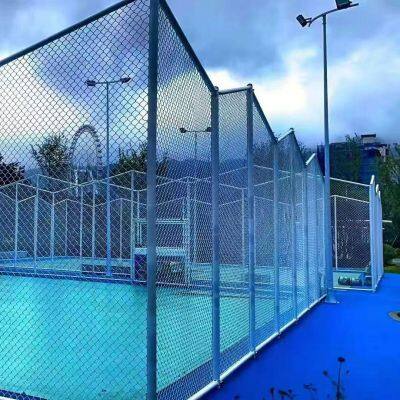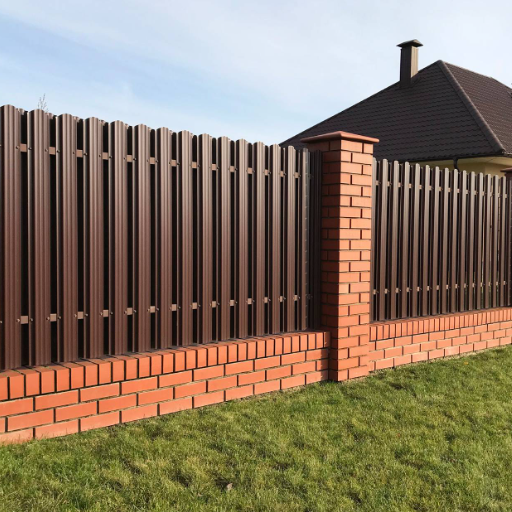-
 Liu
Hi there! Welcome to my shop. Let me know if you have any questions.
Liu
Hi there! Welcome to my shop. Let me know if you have any questions.
Your message has exceeded the limit.

Different Types of Fences for Yards: Choosing the Right Fence Style
2025-10-02 21:43:16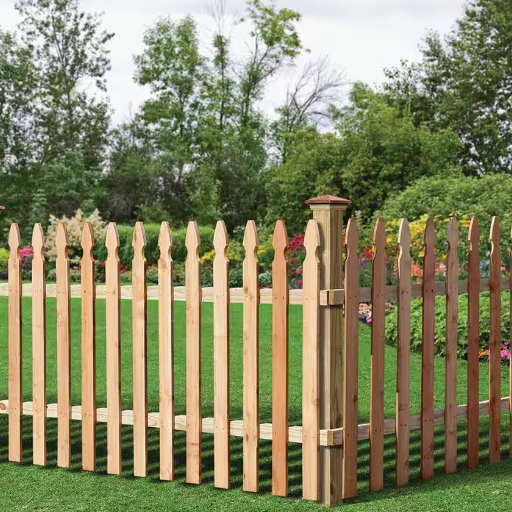
Choosing the perfect fence for a yard is equally practical and aesthetic, which can majorly enhance the property's value, privacy, and curb appeal. With fencing styles such as traditional wood panels, solid vinyl, and new-age metal design, identifying the best option for a particular need can be tempting. This article shall unfold various fence types along with their peculiarities, benefits, and applications. Be it for security, privacy, or perhaps beauty, this guide will aid you in making an informed decision based on your liking and budget.Find more info now
Understand Fences
The usage of fences is multifaceted, making them, thus, a multi-dimensional addition to any property. These are predominantly installed for purpose of security, privacy, and demarcating boundaries, and also improve aesthetic appearance. Security fences deter mad intruders and may be constructed from materials such as steel or wrought iron. Privacy fences, usually wooden or vinyl in composition, obstruct visibility so as to render an area secluded and private. Decorative fences focus on design and enhancement of landscape aesthetics. The type of fence to be chosen depends upon its use, budget, and the particular needs of the property owner.
What actually is a fence?
Fences are, by and large, things made up of mainly wooden planks, metal bars, or anything else that would be suitable: the list is endless, so as to enclose, define, or secure an area. It serves a multitude of purposes, including privacy, security, property boundary markings, and ambiance. Fences, depending on purpose and the dressing environment in which it will stand will be taller, shorter, heavier, lighter, or color-coordinated is both a functional and artistic solution for residential, commercial, and agricultural requirements.
Importance of Fencing Your Yard
The fence is the major parameter defining the boundaries of your yard, hence contributing to all privacy and security arrangements. Acting as a physical barrier, fences prevent unauthorized entry and therefore protect your belongings and family. A fence also serves as a foil against the landscaping and architectural styles of your yard. If correctly installed, fences can cut down noise, screen your scene from the wind, and keep animals off your garden or outdoor space. They can also increase property value by defining an outdoor environment that functions according to your needs.
Fences and How to Choose the Right One
A fence for a particular property must be installed with careful consideration so that it aligns with all its functional and aesthetic requirements. The very first thing to do is determine the main purpose for the fence: security, privacy, aesthetics, or all of these. Next, consider what materials will be used in its construction: wood, vinyl, metal, or composites, each having different levels of durability, maintenance, and aesthetics. Then, take into consideration local climatic and environmental conditions, as certain materials may become unsuitable or have shorter lifespans under such conditions. Budget-wise, one needs to have enough funds to carry out the exercise, limiting all alternatives to those between reasonable and quality consideration. Next up, comply with any state and neighborhood zoning restrictions and requirements of the Homeowner's Association, thereby saving yourself some major headaches. Thus, after weighing all of these factors, you can arrive at an informed decision on the best fence for your individual needs.
Popular Types of Fences
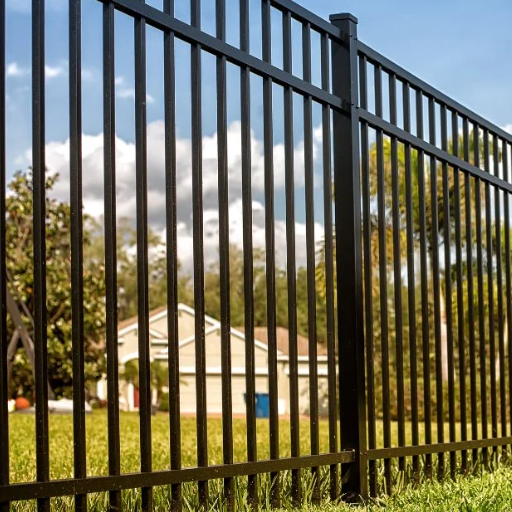
Wood Fences
Wood fences are a great choice because they can be tailored to the level of height, type of design, or finish one desires, giving them versatility and timeless appeal. They can provide privacy but will need upkeep depending on the nature of weathering.
Vinyl Fences
Vinyl fences are long-lasting and require minimal maintenance. They will not rot or fade and prevent pest attacks, so depending on the style or color, these fences will last well into the future and be appreciated as modern fencing.
Chain Link Fences
From the perspective of price and utility, chain link fences provide an effective boundary while ensuring visibility remains unobstructed. Often used in residential as well as commercial settings, they prioritize functionality.
Aluminum Fences
Lightweight, corrosion-resistant aluminum fences are used for decorative purposes. Minimal maintenance gives them security, and they can be useful on many terrains.
Wrought Iron Fences
Wrought iron fences, being considered strong with many intricate designs, are classy and secure. Yet, they may require maintenance from time to time to forestall rust.
Composite Fences
Composite fences are an innovative alternative with its being a mixture of wood fiber and plastic. They look like wood but carry the advantage of being more lastingly resistant to the elements. This makes it quite an environmentally friendly yet long-lasting option for any need.
Each type of fence offers unique advantages that would differ according to the kind of preferences and needs of the property in question.
Wood Fences: Timeless and Grandbacking
This type of fence was designed to meet all the needs of the homeowner, ranging from aesthetic beauty to comfort. Styles can include picket fence, privacy fence, and split rail fence, enabling a complement of several architectural designs. Wood fences are beautiful and flexible, but may require a lot of upkeep. To make wood fences last longer, they are usually stained, sealed, or painted to prevent weather damage. Commonly, cedar, pine, or redwood materials are used, each providing somewhat different levels of weather resistance and in resistance of decay. With all that they need to maintain, wood fencing options remain popular for their very appearance and for warming that a home-like atmosphere.
Vinyl: Durrable and Low-Maintenance
While Vinyl Fence is more durable with less maintenance needed, they are an evolutionary trend among homeowners. Made of polyvinyl chloride (PVC), which offers resistance to rot, insect infestation, and weathering, these fences basically live long without much wear and tear. Unlike wood, vinyl does not require staining or sealing or even painting, for that matter, as it contains color throughout the material, thus resisting fading and chipping. Vinyl is also very easy to clean and, in most cases, just needs to be washed down with soap and water once or twice a year to maintain its shine. Vinyl is strong, and in so doing, it also guarantees a lifetime of utility and beauty with little effort from a variety of styles and colors available for vinyl fences.
Wrought Iron Fences: Elegance and Security
Together, wrought iron fences have always been synonymous with elegant appeal, a lasting charm, and adequate security. Being wrought of iron furnish these fences with an opposition more to impact and weather when well maintained, which means sanding, touching up the paint to prevent rust formation at irregular intervals. The intricate iron patterns allow these fences to pamper whatever style of architecture from any kind of abode, doing so even while providing a worthwhile security feature. Moreover, these fenced areas present better security against trespassing due to the strength wrought iron fences can offer with tall, spiked designs that face-out balustrades.
Specialty Fences for Unique Needs
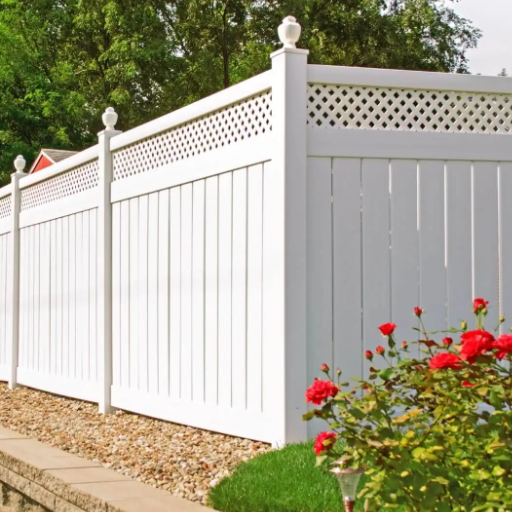
Specialty fences cater to specific needs, whether those involve functional, aesthetic, or regulatory aspects. For example, a privacy fence is constructed with minimal gaps between panels to ensure seclusion, whereas a pool fence is mandated by safety codes to prevent unauthorized access. In agriculture, fences serve the dual purpose of confining animals and demarcating land boundaries and are generally constructed with durable materials such as wood or metal. Sound or acoustic fences are constructed with special materials that absorb sound and minimize noise pollution. Thus, these fences ensure that special needs are being met at the highest level of quality and performance.
Privacy Fences: Creating Your Own Sanctuary
Privacy fences give you secured isolation and a secluded environment as they adequately block the view of your outdoors. Timber, vinyl, or composite materials provide thin walls to block view and provide personal comfort. Also, they block unwanted distractions, minimize noise disturbances, and create an area for openness or recreation. With different styles of privacy fence available, an individual may select one that complements their tastes and blocks noise as per the local zoning regulations. Strong and durable, they are a great investment toward boosting your property value and providing long-term peace of mind.
Garden Fences: Beauty and Protection
Garden fences provide more than just utility; they also offer beauty. Consider two plants surrounded by each other-the fence protects them from the wind and pests. While protecting plants, fences may also serve to mark the property boundary. Garden fences enhance the appearance of outdoor spaces and may vary in design from traditional wooden picket fences to contemporary metal varieties. They may even foster climbing plants, with natural elements considered while designing the fence. Selecting the right materials and finishes guaranteeing that the fence resists weather will undoubtedly cement its status as a key feature in landscaping, offering beauty and utility.
Picket Fences: Traditional Charm for Front Yards
Picket fences stand famed for their timeless appeal, often associated with classic front yard designs that conjure up images of quaint charm and neatness. Traditionally from wood or vinyl, fences here are made up of vertical boards-aforementioned as pickets-placed at regular intervals and connected by horizontal rails. The core function of these fences is ornamental, while also serving to clearly demarcate the property boundary. The wooden picket variety offers the most natural and classic look but does require upkeep like repainting or staining to protect against weathering. Vinyl goes toward minimal upkeep and rot resistance, but it may lack the feel of natural wood. A firm grasp on good installation is essential for picking fences as this comprises uniformity in spacing between individual pickets and securely fixing base posts for stability and symmetry. Blending functionality with stylish appeal, picket fences continue to be favored choices for curb appeal.
Fence Material Considerations

Primarily, the need for durability and maintenance consideration can determine the type of material that should be used in making fences. Wood, a traditional choice, rarely ceases to impress in the way of beauty of nature-wood-but needing some treatments every now and then to be sealed or painted to resist decay and weather-damage. On the other hand, vinyl stands as a strong, low-maintenance alternative retaining its color and resistance to decay for years and, therefore, is considered a worthy investment. Metal, such as aluminum or steel, offers the strength and durability with almost no maintenance (except for maybe some cleaning every now and then). Low-maintenance and environmentally friendly options are composites: They combine durability with natural wood look. Ultimately, climate, sticking to the budget, and desired balance between aesthetics and maintenance will decide which type fits best.
Choosing the Right Fence Material
When choosing fencing materials, keep certain prominent issues in mind: durability, maintenance, and other aesthetic considerations. The homeowners will want to focus on long-term durability in a wet climate, in which case vinyl or composite materials fit the bill, as these do not absorb moisture and will not rot. Metal fence options, such as aluminum or steel, are perfect if strength and low maintenance are wanted since the metal is very hard and resistant to weather. Wooden fences offer strong traditional charm that requires regular inspections, staying, or sealing to retain its beauty and ensure longevity. The best material is therefore one that depends on a fair balance between your weather conditions, budget, and desired fence outlook.
Metal Fences: Strength and Longevity
A metal fence has always been reasonably durable, weather-resistant, and maintenance-free. Aluminum, being light and rust-free, does well where humidity or salt in the air create bad environmental effects: the coastline, in short. Steel, heavier than aluminum and mostly costlier, is about the best security and strength you can have: for high-volume applications or industrial use. Both can be powder-coated for protection as well as customization in color and design. Metal fences are usually priced more than wood. Still, the low maintenance and further working years make them good long-term investments, an ideal choice for any residential or commercial project.
Aluminum Fences: Light and Versatile
Aluminum is famed for being a lightweight metal with endless applications and uses. If exposed to all kinds of weather conditions, aluminum cannot corrode or rust, hence making it durable and needing less maintenance. Aside from flexibility, aluminum fences can be created with any number of designs and finishes to fit all sorts of architectural styles. Aluminum fences will usually be cheaper than steel; however, steel fences can resist more stresses. Nevertheless, aluminum fences have found their way into most residences for use in pool enclosures and other decorative purposes.
Installing Your Fence
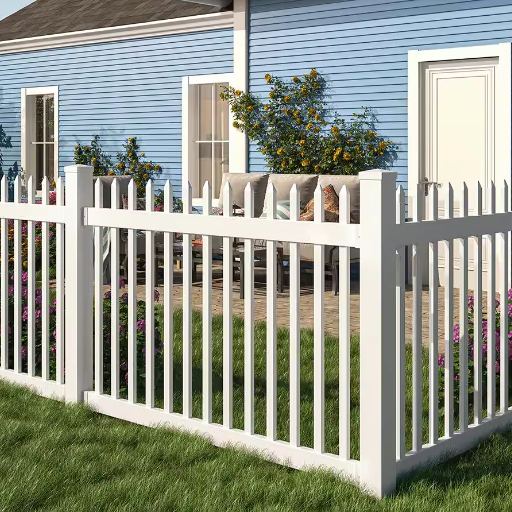
1. Planning and Measures
Start by planning the fence layout and measuring everything accurately. Mark the fence post locations with stakes or spray paint and make sure they are correctly aligned.
2. Post Hole Preparations
Using a post hole digger, prepare holes to set the fences in. The hole depths and spacings are dictated by the type of fence erected and its height, usually every 6-8 feet.
3. Installing Fence Posts
Put the posts into the holes, pour the concrete, and wait for it to set. Meanwhile, make certain all fence posts remain in line and level.
4. Attaching Fence Panels
Fix the fence panels to the fence posts with brackets, screws, or nails, ensuring the panels' precise alignment and spacing as you do so to maintain a uniform and polished look.
5. Finalizing Work and Inspection
Now, check the fence work for stability and make all necessary adjustments. Also, apply finishes where necessary to protect the wood or metal fence from further weathering.
Costs Associated with Fence Installation
The installation of fencing depends on many factors-different types of materials being the important factors, the size and difficulty of a project, and labor. Materials such as wood, vinyl, metals, or composites vary widely in price, with vinyl and composites being more robust and, thus, more expensive. Labor expenses will depend on the amount of work: more intricate designs, irregular terrain, and some degree of custom work will all add to the labor cost. Local laws and permits can be grounds for additional charges. Maintenance is also something to consider: wood, for instance, might require staining or sealing on occasion, while vinyl is comparatively cheaper to maintain. It is by considering these factors that one may calculate a closer estimate of the total investment required.
DIY Fence Installation vs. Professional Fence Installation
The price of a fencing project is largely determined by its scale, which also requires a different level of ability. In some cases, DIY fence installation can be less expensive, especially if the person already has the tools, skills, and time to work on it. However, it entails planning, accurate measurements, and adherence to codes, which may be very difficult and intimidating if ever they are unfamiliar with the task. And since professionals have learned to efficiently execute the task and have access to special machinery, they assure a good quality fence that will last for an extended period of time. Though paid installation is more expensive in the short term, the greater bargain may be that this will save time and prevent errors or redoing later. The best choice is based on the scope of the project, skills, and considerations to long-term benefits.
Frequently Asked Questions (FAQs)
What are the kinds of materials from which fences can be made?
You can indeed choose from various fence materials, each with unique perks. Wood, vinyl, chain-link, and metal panel fences are commonly installed in different areas. Among all, wood fencing gives an old look and allows an array of styles, like picket or rail fences. Vinyl fencing is considered a durable option that needs less maintenance. Chain-link offers one of the cheapest fence options suitable for security without obstructing visibility. Metal privacy fences, being another alternative, are strong and long-lasting, while composite fencing combines recycled wood and plastic for one really green option.
How do I choose the best fence for my yard?
The estimated cost of fence installation varies according to the types erected. Wood fences are the most costly to install. Vinyl fences, on the other hand, are less expensive to install. Costs vary by location and do not include permits, depending on building codes. Some of the common factors affecting installation costs are terrain, additional anchors, gates required, driveways and slopes, and the location of the materials. Common fee interventions are, however, due to the type of fence and materials, the quality of materials, and the time and size of the project.
What is good to note about cost?
The installation costs for fences vary greatly based on the kind of fence, the material, and the difficulty of installation. For instance, a simple chain link fence is probably the cheapest kind to install, whereas wrought-iron and vinyl privacy fences tend to be more expensive. One needs to get several quotations from contractors to know the full extent of costs, from labor to materials. Quality fencing, being a worthy investment, gives you value and longevity for your yard. Keep always in mind the maintenance costs as you prepare your budget.
What are some popular fencing ideas for my backyard?
Several fencing options are there that can make your backyard more appealing while serving a purpose. Building a wood privacy fence creates a natural, hidden retreat, while the vinyl picket fence imparts charm and marks the boundaries. For a sleek, modern finish, choose metal panels or composite fences that offer various designs and durability. Lattice fences are a good fit for an enchanting mix of partial privacy with the joy of letting climbing plants grow freely. In addition to these materials, you may use separate types and mix combinations, such as wood with metal accents, to mold your unique design that reflects your spirit. Go through consideration at once in how this fence will fit with whatever landscaping you already have.
Tags: Fences for Yards
